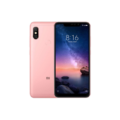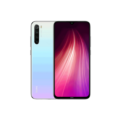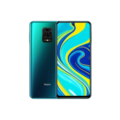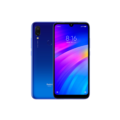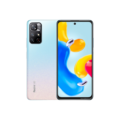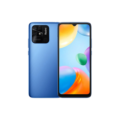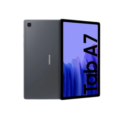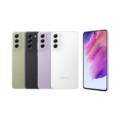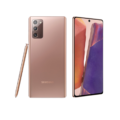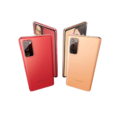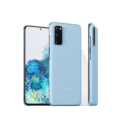Redmi Note 10 Harga Malaysia
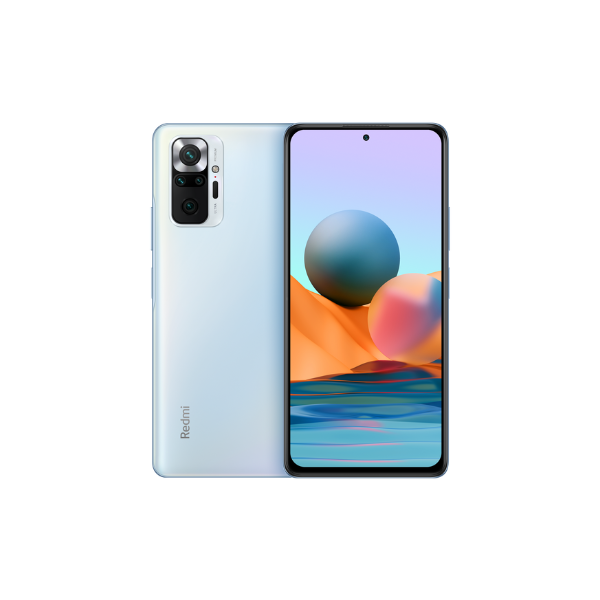

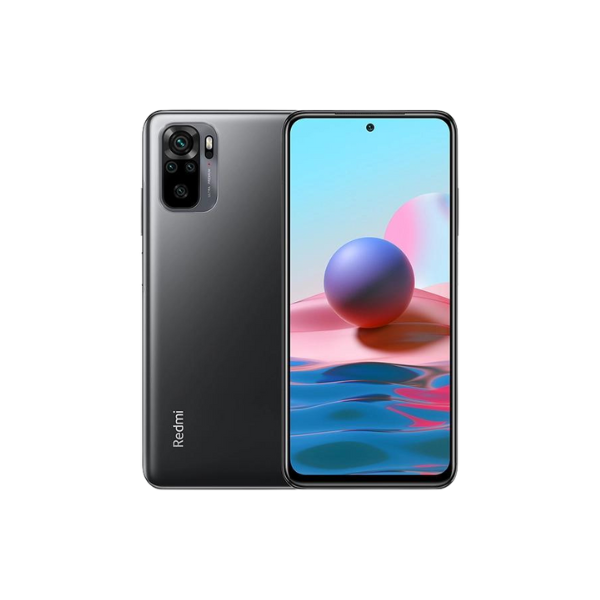
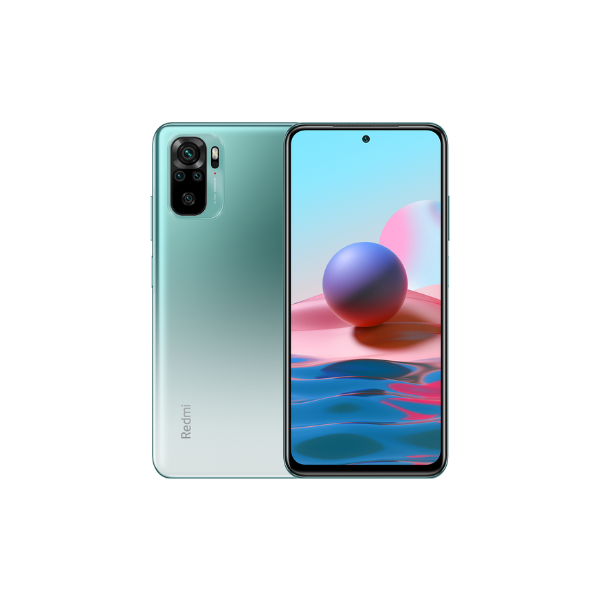
- CPU: Qualcomm SDM678 Snapdragon 678 (11 nm)
- RAM: 4 GB, 6 GB
- Storage: 64 GB, 128 GB
- Display: Super AMOLED
- Camera: 48 MP Quad Camera
- OS: Android 11, MIUI 12.5
- AnTuTu Total Score: 218788 (v8)
Redmi Note 10 Harga Malaysia Spesifikasi Malaysia
General
| Device Type | Smart Phone |
| Model | M2101K7AI, M2101K7AG |
| Announced | 04 March, 2021 |
| Released | 16 March, 2021 |
| Status | Available |
| Price | RM531 |
Design
| Type <strong>Design Type</strong> called form factor refers to a mobile phone's size, shape, and style as well as the layout and position of major components of phone. There are three major form factors seen in mobile phones => bar phones, folding phones and sliding phones. | Bar |
| Dimensions | 160.5 x 74.5 x 8.3 mm (6.32 x 2.93 x 0.33 in) |
| Weight | 178.8 g (6.31 oz) |
| Body Type | Glass front (Gorilla Glass 3), plastic back, plastic frame |
| Protection | IP53, dust and splash resistant (market/region dependent) |
| Colors | Shadow Black (Onyx Gray), Frost White (Pebble White), Aqua Green (Lake Green) |
Network
| 4G Network |
1, 2, 3, 4, 5, 7, 8, 20, 28, 38, 40, 41 - International 1, 3, 5, 8, 40, 41 - India |
| SIM <strong>SIM</strong> (Subscriber Identity Module) is a small card that contains mobile network subscriber's account information. This allows the phone using the card to attach to a mobile network. The SIM card is most commonly associated with GSM and UMTS mobile networks. Moving a SIM card from one phone to another allows a subscriber to switch mobile phones without having to contact their mobile network carrier. SIM cards can also be used by a phone to store limited amounts of data, such as phone numbers and text messages. | Nano SIM |
| Dual SIM | dual stand-by |
Display
| Display Type <strong>Display Technology => </strong> A number of display technologies and types used in mobile phones => TFT (Thin Film Transistor), IPS (In-Place Switching), OLED (Organic Light Emitting Diode), AMOLED (Active-Matrix Organic Light-Emitting Diode), Super AMOLED (an even advanced version of AMOLED), Resistive Touchscreen (Resistive touchscreens contain two layer of conductive material with a very small gap between them which acts as a resistance), Capacitive Touchsceen (Capacitive touchscreen technology consists of a layer of glass coated with a transparent conductor) | Super AMOLED |
| Size | 6.43 inches, 99.8 cm2 (~83.5% screen-to-body ratio) |
| Resolution | 1080 x 2400 pixels, 20:9 ratio |
| Display Colors <strong>Display Colors</strong> is refers to the number of different shades of colors that the screen is capable of displaying => 64K colors, 256K colors and 16 million colors, Obviously 16M is highest available range of colors and better than others. | 16 Millions Colors |
| Pixel Density <strong>Pixel Density (PPI)</strong> is refers to the concentration of pixels on a particular display, measured in pixels per inch (ppi). Pixel density is calculated by dividing the diagonal pixel resolution of a display by its diagonal size, higher pixel density better display quality. | (~409 ppi density) |
| Touch Screen | Yes, Multitouch |
| Display Protection <strong>Display Protection => </strong> Gorilla Glass is a special alkali-aluminosilicate glass shield with exceptional damage resistance that helps protect mobile displays from scratches, drops, and bumps of everyday use, It is always better to go for a smartphone with Gorilla Glass for that added protection and peace of mind. | Corning Gorilla Glass 3 |
| Features |
450 nits (typ) 1100 nits (peak) |
Camera
| Rear Camera <strong>Camera</strong> is able to capture photographs and usually videos, The most important characteristics of a camera are the resolution (measured in megapixels), lens focus type (fixed or automatic), higher megapixel cameras are known to capture higher quality photos, but not always a good measurement of the photos quality. |
Quad Camera 48 MP, f/1.8, 26mm (wide), 1/2.0&amp;quot;, 0.8µm, PDAF 8 MP, f/2.2, 118˚ (ultrawide), 1/4.0&amp;quot;, 1.12µm 2 MP, f/2.4, (macro) 2 MP, f/2.4, (depth) |
| Front Camera | 13 MP, f/2.5, (wide), 1/3.06&amp;quot;, 1.12µm, 1080p@30fps |
| Image | 2160p |
| Video | 4K@30fps, 1080p@30/60fps |
| Camera Features | LED flash, HDR, panorama |
Software
| Operating System <strong>OS => </strong> Every computer system run on a base software called Operating System (OS). Operating System controls all basic operations of the computer (such as smartphone, PDAs, tablet computers and other handheld devices). The Operating System allows the user to install and run third party applications (apps), apps are used to add new functionality to the device. | Android 11 |
| User Interface <strong>UI</strong> or user interface of a device is the look and feel of the on-screen menu system. How it works, its color scheme, how it responds to button presses, all of these things are part of the user interface. | MIUI 12.5 |
Hardware
| Chipset <strong>Chipset</strong> is a group of integrated circuits designed to perform one or a more dedicated functions, often with real time computing constraints, Popular smartphones are equipped with more advanced embedded chipsets that can do many different tasks depending on their programming. | Qualcomm SDM678 Snapdragon 678 (11 nm) |
| CPU <strong>CPU</strong> (Central Processing Unit) mostly known as processors, CPU processes instructions in order to carry out certain functions that make your device operate properly. Processors are often described as the brain of computers, smartphones and tablets, Smartphones and tablets rely on processors to carry out their every task, Processors are an incredibly important factor in selecting any type of computing device, including your smartphone. | Octa-core (2x2.2 GHz Kryo 460 Gold & 6x1.7 GHz Kryo 460 Silver) |
| GPU <strong>GPU</strong> (Graphics Processing Unit) is a single-chip processor designed to rapidly manipulate and alter memory to accelerate the creation of images in a frame buffer intended for output to a display, This includes things such as lighting effects, object transformations, and 3D motion. | Adreno 612 |
| RAM (Memory) <strong>RAM</strong> (Random Access Memory) is a type of computer memory that can be accessed randomly, any byte of memory can be accessed without touching the preceding bytes that allows information to be stored and accessed quickly from random locations. RAM is the most common type of memory found in computer systems, smartphones, tablets and other electronic devices. | 4 GB, 6 GB |
| Internal Storage <strong>Internal Storage</strong> is a data storage space (flash memory) mostly used in smartphones, tablets and other electronic devices where operating system, apps, music, photos, videos, files and other user data Is stored. | 64 GB. 128 GB |
| Card Slot <strong>Memory Card Slot</strong> is a special slot for inserting a memory card. Memory cards allow you to expand the phone's built-in memory, A memory card (sometimes called a flash memory card or a storage card) is a small storage medium used to store data such as text, pictures, audio, and video, for use on small, portable or remote computing devices such as mobile phones, mp3 players, digital cameras. | microSDXC (dedicated slot) |
| Sensors <strong>Sensors</strong> are electronic components that detects and responds to some type of input from the physical environment. The specific input could be light, heat, motion, moisture, pressure and location, The output is generally a signal that is converted to use in computing systems, a location sensor, such as a GPS receiver is able to detect current location of your electronic device. |
Fingerprint (side-mounted), accelerometer, gyro, compass Virtual proximity sensing |
Battery
| Battery Type <strong>Battery Type => </strong> Cell phones run on various kinds of batteries depending on the manufacturer, phone size or shape and features. There are basically four types of cell phone batteries => Lithium Polymer, Lithium Ion, Nickel Metal Hydride and Nickel Cadmium. | Li-Poly (Lithium Polymer) |
| Placement | non-removable |
| Capacity <strong>Battery Capacity</strong> is a measure (typically in Amp-hr) of the charge stored by the battery, and is determined by the mass of active material contained in the battery. The battery capacity represents the maximum amount of energy that can be extracted from the battery under certain conditions. | 5000 mAh |
| Charging | 33W wired, 50% in 25 min, 100% in 74 min (advertised) |
Connectivity
| Bluetooth <strong>Bluetooth</strong> is a wireless communications technology for exchanging data between mobile phones, headsets, computers and other network devices over short distances without wires, Bluetooth technology was primarily designed to support simple wireless networking of personal consumer devices. | 5.0, A2DP, LE |
| Wi-fi <strong>Wi-Fi</strong> is a popular wireless networking technology using radio waves to provide high-speed network connections that allows devices to communicate without cords or cables, Wi-Fi is increasingly becoming the preferred mode of internet connectivity all over the world. | Wi-Fi 802.11 a/b/g/n/ac, dual-band, Wi-Fi Direct |
| Wi-fi Hotspot | |
| USB | USB Type-C 2.0 |
| GPS <strong>GPS</strong> The Global Positioning System is a satellite-based radio navigation system, GPS permits users to determine their position, velocity and the time 24 hours a day, in all weather, anywhere in the world, In order to locate your position, your device or GPS receiver must have a clear view of the sky. | GPS, GLONASS, BDS, GALILEO |
| NFC <strong>NFC</strong> (Near field communication) is a set of standards for smartphones and similar devices to establish peer-to-peer radio communications with each other by touching them together or bringing them into proximity, usually no more than a few inches. | |
| Wireless Charging <strong>Wireless Charging</strong> (Inductive Charging) uses an electromagnetic field to transfer energy between two objects. This is usually done with a charging station. Energy is sent through an inductive coupling to an electrical device, which can then use that energy to charge batteries or run the device. | No |
Media
| Loudspeaker | Yes, with stereo speakers |
| Handsfree | 3.5mm jack |
Redmi Note 10 telah dikenali sebagai pilihan bajet untuk telefon flagship Xiaomi, dan ia telah berada di pasaran selama lebih dari satu tahun.
Xiaomi Redmi Note 10 pada awalnya direka sebagai telefon pintar bajet sederhana untuk pelbagai kalangan pengguna smartphone.
Dengan prestasi yang hebat untuk bajet terhadnya, di sini dalam ulasan teknologi dan gadget, kami akan mengulas semua tentangnya secara jujur.
Pendapat awal kami tentang Redmi Note 10 4G adalah ia menawarkan prestasi yang baik dengan bajet yang cukup terhad, oleh itu memberikan nilai yang baik untuk harganya.
Jika anda ingin mencari telefon bajet yang juga menawarkan prestasi yang baik, maka Redmi Note 10 adalah salah satu calon yang sempurna untuk telefon tersebut.
Reka Bentuk dan Binaan
Redmi Note 10 mempunyai reka bentuk yang sangat ringan, dengan sentuhan beg plastik putih pada pembungkusnya.
Ia mempunyai binaan yang kukuh yang tidak mudah tercalar, dan menawarkan pelbagai ciri dan fungsi menarik seperti biometrik pengimbas cap jari, IP52, speaker stereo dwi dan haptik Z-Axis.
Ia juga datang dengan kaca Gorilla Glass 5 yang akan memberikan perlindungan skrin yang hebat.
Bagi warna Redmi Note 10, mereka hanya menawarkan empat warna berbeza iaitu Aqua Hijau, Hitam Bayang, Perunggu Kuno, dan Putih Salji.
Ingatlah bahawa sesetengah warna mungkin tidak tersedia dengan mudah di kawasan anda, jadi semak ketersediaan warna untuk setiap kawasan.
Paparan
Paparan dari Note 10 telah dinaik taraf dari pendahulunya, dengan skrin AMOLED 6.43 inci, FullHD+, resolusi maksimum 2400 x 1080 piksel, dan kadar penyegaran maksimum 60 Hz, kecerahan puncak 1100 nits.
Satu perkara yang agak menyebalkan tentang Note 10 ini adalah kadar penyegarannya. Ia hanya mempunyai kadar penyegaran maksimum 60 Hz, sementara banyak pesaingnya kini membanggakan kadar penyegaran 120 Hz.
Namun begitu, untuk telefon yang telah dikeluarkan setahun yang lalu, bagi telefon bajet sederhana rendah, kadar penyegaran 60 Hz sepatutnya sudah mencukupi untuk digunakan dalam permainan, video, dan sebagainya.
Kamera
Kamera belakang membanggakan kamera Sony 48MP, dengan sudut ultralebar 8MP, makro 2MP, dan pengesan kedalaman 2MP. Bagi kamera hadapan, ia mempunyai kamera selfie 13MP.
Tidak banyak yang boleh dikatakan untuk segi kamera, kerana ia bukanlah telefon flagship yang terkenal untuk siri kamera Redmi Note 10, tambahan pula ia masih merupakan telefon bajet yang telah dikeluarkan selama lebih dari satu tahun.
Perisian
Bagi sistem operasi Android, ia datang dengan Android 11 dengan MIUI 12, dan beberapa versi MIUI 12.5 telah tiba sejak itu.
Android 11 sudah cukup baik untuk telefon yang telah berusia setahun, walaubagaimanapun, jika anda mengharapkan perisian Android yang lebih cepat, anda mungkin mahu mendapatkan telefon yang menyokong Android 12.
Prestasi
Dari segi spesifikasi Redmi Note 10, ia berprestasi cukup baik, walaupun dengan harga rendahnya, dengan Qualcomm Snapdragon 678, 64 GB memori yang boleh dinaik taraf menjadi 128 GB, dengan 4 GB RAM.
Prestasinya dijangka pada julat harga ini, tetapi ia memberikan nilai yang sangat baik untuk harganya dan boleh dinaik taraf ke Redmi Note 10 6GB 128GB.
Hayat Bateri
Ia mempunyai bateri 5,000 mAh dengan pengcasan cepat 33W. Keseluruhannya, ia memberikan prestasi yang baik untuk Redmi Note 10 4G.
Harga Redmi Note 10 di Malaysia
Harga Redmi Note 10 akan menjadi RM531, untuk variasi 64 GB dan 4 GB RAM. Ini adalah harga yang sangat rendah untuk prestasi yang cukup hebat.
Anda boleh melawat laman web rasmi di Mi.com
Soalan Lazim
Bagaimanakah prestasi dan sistem Xiaomi Redmi Note 10?
Kualiti binaan adalah sangat baik, prestasi kamera mencukupi, dan untuk harga yang rendah, ia memberikan prestasi yang cukup baik dalam binaan dan perisian.
Adakah kamera Xiaomi Redmi Note 10 baik?
Kamera memberikan prestasi, tetapi ia bukan yang terbaik untuk harganya atau prestasinya. Bagi prestasi kamera, mungkin lebih baik memilih jenama pakar selfie yang lain.
Bagaimanakah hayat bateri Xiaomi Redmi Note 10?
Ia bagus untuk mempunyai bateri 5,000 mAh yang mampu mengendalikan tugas yang mencabar, dan boleh digunakan selama lebih dari 20 jam untuk prestasi normal tanpa pengcasan. Pengcasan pantas 33W sudah mencukupi, walaupun seperti yang dijangka dari telefon bajet rendah, ia mungkin tidak terbaik untuk prestasinya, tetapi sangat berharga untuk harganya yang rendah.
Kesimpulan akhir dalam ulasan Redmi Note 10 kami, ia adalah telefon yang hebat dan berharga untuk harganya yang bajet.
Harga mungkin berbeza-beza dalam kawasan yang berlainan, bagaimanapun, harga permulaan yang hebat untuk prestasinya, dan ia akan menjadi telefon yang baik untuk bermain permainan juga. Sentuhan kamera, bagaimanapun, boleh diperbaiki, dan mempunyai hayat bateri 5,000 mAh juga sentuhan akhir yang baik.

